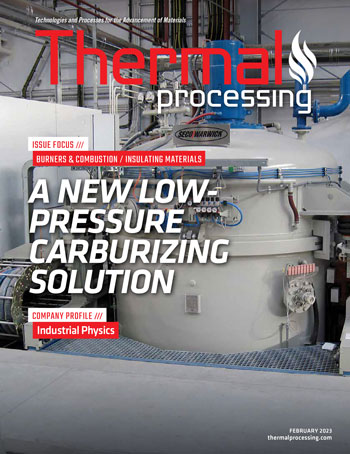
We all trade time for money. Gone are the days of bartering, trading your chickens for goats. We go to work to earn a paycheck. Making money is important. That is how a company stays afloat and how employees make money to live. But it is also important to understand another meaning of “value” for employees, to motivate them to perform the necessary work.
Establishing value
There is a classic image of a donkey looking at a carrot dangling just in front of his nose as he pulls a cart forward that depicts the classic “extrinsic” motivation model — place a nice juicy carrot in front of employees and they will pull whatever load is required to get the reward. But to fully understand what is actually going on in the performance of employees, it’s necessary to realize it must be something beyond the mere placement of a “carrot” in front of them that motivates them to put parts into a furnace, reduce scrap costs, and get parts to the customer on time.
The donkey
The first component of this metaphor is that the donkey has to be competent. We would not designate a bird to pull the necessary cart with a carrot in front. This isn’t to say that employees are donkeys (though donkeys are actually hard-working). The problem, though, is that sometimes the donkeys aren’t a good fit and maybe the donkey acts out in a way of displeasure. So, like a coach in football, employees must be placed in their areas of strength and talents. Some athletes are best suited for a linebacker, others a quarterback or a kicker. It’s the same in heat treat, where some strengths of the operators will depend on their interests, backgrounds, and professional goals. Although all of the operators performing the work in heat treat can do the basic skills of setting up, running, and reviewing a completed cycle, there are other areas of skill such as pyrometry, furnace tuning, and even metallurgical evaluation that can also provide motivation to get the work done.
Some heat-treat operators like to know more about “why” they are pulling the cart, such as what does heat treat do to the microstructure? Other operators are more concerned about the quality of the cart they are pulling. Or they might be interested more in how the furnace is properly calibrated or how to tune the power settings to achieve the temperature uniformity required for cycles.

The cart
The second component is the relationship of the donkey to the cart — the employee to the work they are assigned to do. The cart is the work to be performed. The furnace that needs to be loaded. The cycle that has to be quickly turned around into a deep freeze and eventually tempered. Can the employee move the cart? Do they have the skills to do this? Is the cart setup in a way they can actually get the work done?
If the cart is too heavy, the employee won’t be able to get the work done. Too many cycles running at the same time might cause errors in load setup and even cycle completion. If the cart is too light, production might suffer and a bottleneck occurs where parts aren’t being full processed.
The cart represents the minimum work that needs to get done. Sometimes to push the employee, simply dumping the work on them without telling them does not turn out well and they will get nowhere. Instead, the goal for managers in heat treat should be to set up the scenario where the employees want to load their cart each day and perform the necessary work.
The carrot
The third component is the actual carrot, representing what employees are chasing after. This extrinsic reward is often the focal point of reward systems in performance review systems of employees. However, it overlooks a critical component of intrinsic motivators of employees. All employees want to test their skills in some shape or form. To make the claim that people simply “work for a paycheck” is overlooking an important aspect of what else is also motivating someone to do what they do. Maybe they want to be the best at understanding metallurgical phenomena in the way of a football quarterback striving to be the best quarterback. What is sometimes hard to accept is that American work culture sometimes overlooks the fact that some people simply can enjoy the work they do. So, employees default to sayings such as, “I’m just here for a paycheck” or “It’s just a job.” And, yes, they are and it is, but there are many types of work — other options — out there. If they are sticking around, it’s not only the pay that is keeping them there at this point.
But the carrot needs to be juicy enough for employees to want to work toward it. It also has to actually be given to them in intervals that keep them on the path toward the company’s success. If the carrot is dangling in front of them forever and just used as a constant teaser, the employee will give up and the cart will stop there.
Conclusion
One of my greatest satisfactions as the heat-treat process owner has been getting new employees with no familiarity with material science and educating them to understand and be able to explain the phenomena of microstructure evolution during heat treat. It is also in developing each employee to the fullest potential of what they can do in their position. I have seen employees with a high-school education excel at the materials science portion. I have seen employees with minimal automation engineering backgrounds excel in the tuning of PID and power settings. The trick to establishing value beyond a paycheck is to see the potential of each employee, recognize the cart they are pulling and what they might want to carry on it for work to get done, and to balance the carrot placed in front to keep the process continually moving forward.


























